1. Dunbars Number
1.1. What is the normal size of a social community?
1.2. ~148 is the normal community size for strong ties
1.3. Clean font: 8 minutes to do task
2. 10. People only pay attention to what they really need to pay attention to
2.1. Which is the real penny?
2.2. How many times have we seen a penny?
2.3. We are unsure which is the real penny
2.4. l
2.5. 40 million sensory inputs every moment
3. 9. Speakers and Listeners brains sync up
3.1. The pattern of what's active in your brain is a second or two behind the speaker
3.2. Adam Ostrow: After your final status update
3.3. Syncing doesn't require vision
3.4. What does this have to do with web design?
3.4.1. Video seems very important
3.4.2. When reading your brain is not syncing
3.4.3. Syncing means communication is deeper
3.4.4. Video/Audio is more compelling than text
3.4.5. Messages are remembered longer
3.5. Video testimonials
3.5.1. Great for advertising
3.5.2. Could be great for feedback to execs
4. 8. There are weak ties and string ties between people
4.1. Strong Ties
4.1.1. I can name these people
4.1.2. I know their relationship to me
4.1.3. I know their relationship to each other
4.1.4. I am in physical proximity
4.1.5. Social media? Can there be strong ties?
4.2. Weak Ties
4.2.1. Weak sounds bad, but it's not.
4.2.2. Can have communities larger than 150
4.2.3. it's a different kind of relationship
4.3. The things you do to build community will be different if you are building a weak or strong tie community
4.4. Google+ allows you to create strong or weak tie relationships
4.5. Does the technology people use change this?
4.5.1. WoW
4.5.2. Facebook
4.5.3. Online games
5. 7. The Fusiform Facial Area Makes Us Pay Attention to Faces
5.1. The FFA is part of the brain
5.2. only function is facial recognition
5.3. This is a huge part of our brain
5.4. Websites with faces are noticed
5.5. Eye direction of photo is where your eyes will go
5.6. What about things that look like faces?
6. 6. Your brain reacts different depending on the people you know
6.1. It's about the relationship
6.2. Celebrity endorsements are different than personal endorsements
7. Intellectuals Solve Problems, but geniuses prevent them - Einstein
8. asdf
9. by Susan Weinschenk
9.1. Reads research papers for Fun
9.2. Wrote a couple books
9.3. Presented at each IUE (7 years)
9.4. @thebrainlady
9.5. President of the User Experience Institute
9.6. Debuts new ideas/topics at #iue2011
10. 5. People use peripheral vision more than central to understand a scene
10.1. Larson, Adam, and Loschky Journal of Vision, 9 10:6
10.2. People can't answer direct questions about peripherial items
10.3. But they do take it in if you ask a general question
10.4. It is subconsciously assimilated
10.5. This may be a weakness in eye tracking
10.5.1. It only follows central vision
10.5.2. Just because someone *sees* something it doesn't mean they notice it
11. 4. Hard to read fonts == Hard Task
11.1. Song H & Schwarz Processing Fluency Affects Effort Prediction and Motivation
11.2. Same task, different fonts.
11.3. Hard to read font: 15 minutes to do task
11.3.1. sdfasdf
11.3.2. asdfsadf
11.4. Clean font: 8 minutes to do task
11.5. Small fonts suck
12. 3. People can only remember 3~4 items
12.1. 7 +- 2 is urban legend
12.2. It was an idea and opinion not backed by research
12.3. Baddeley Psychological Review, 101 353-356
12.4. Don't have huge lists!
13. 2. People reconstruct memories each time they remember them
13.1. Loftus, Elizabeth & Palmer J Journal of Verbal Learning, Issue 13 pages 585-589
13.2. When they changed the wording answers change
13.3. Memories we have are not real.
13.4. They play like real videos
13.5. but every time you remember something it changes slightly
13.6. On 9/12/2001
13.6.1. write down everytihing you remember
13.6.2. 6 months later asked to recall
13.6.3. read what they had written
13.6.4. 70% of the peoples stories didn't match
13.7. When people analyze something it makes them like it less
14. 1. People expect technology to follow human to human rules
14.1. Make sense!
14.2. don't use gibberish
14.3. if you wouldn't say it, don't use it for messaging
14.4. Don't talk down
14.4.1. who is paying attention to content?
14.5. be flexible
14.5.1. Don't limit content because your code sucks.
